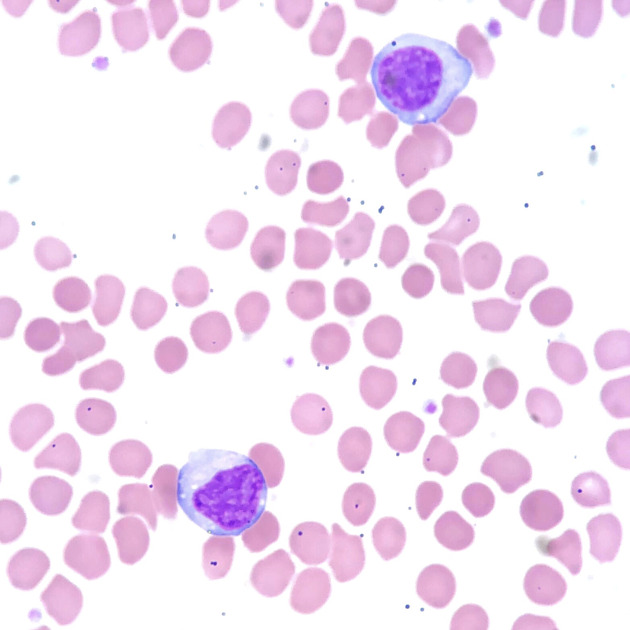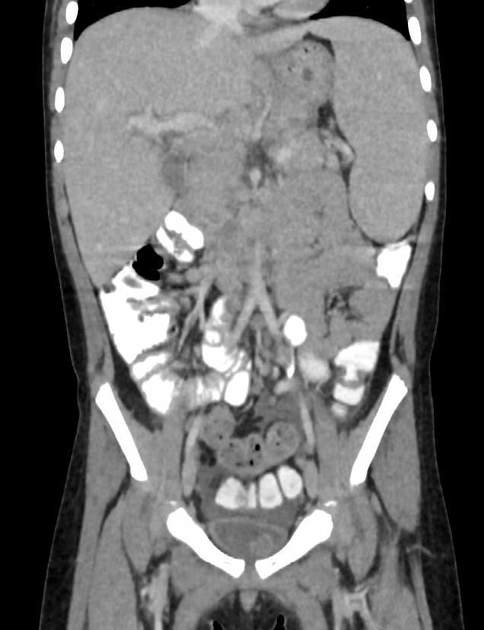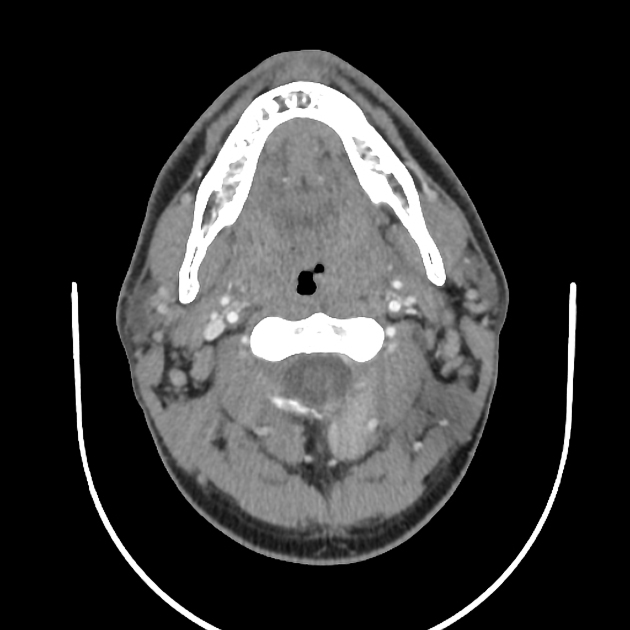Infectious mononucleosis (also known as glandular fever) is the term for infection with Epstein-Barr virus (EBV). The infection classically occurs in teenagers and young adults, hence its popular name kissing disease. It is usually a clinical diagnosis, with confirmation by serum testing, but may have suggestive findings on imaging.
On this page:
Epidemiology
Exposure to Epstein-Barr virus is extremely widespread: 90% of adults are seropositive. When acquired during childhood it often remains subclinical but of those who acquire it during adolescence or young adulthood, 25% will become symptomatic 5. In about 5% of cases, cytomegalovirus (CMV) is the causative pathogen for infectious mononucleosis.
Clinical presentation
-
lymphadenopathy and splenomegaly
occasionally hepatosplenomegaly
fatigue
occasionally: rash
Complications
splenic rupture: may be spontaneous but is quite rare 6
Pathology
It was originally called "mononucleosis" after abnormal mononuclear cells were found in patients with the clinical syndrome.
The epstein-Barr virus is in the herpesvirus class and is also called human herpesvirus 4. It is thought to be spread primarily through a person-to-person route through salivary secretions. The Epstein-Barr virus infects B-cells in the lymphoid tissue. Like other herpes viruses, it becomes a lifelong chronic infection with periodic shedding of virus.
Elevated transaminases are occasionally seen.
Autoimmune diseases
Through the action of the EBNA2 viral protein on the expression of certain genes, there is a possible correlation between EBV infection and the development of some autoimmune diseases (such as multiple sclerosis, rheumatoid arthritis, inflammatory bowel disease, etc.) 7.
Radiographic features
Diagnosis is usually through serum lab work which shows lymphocytosis and a positive heterophile antibody test. Imaging is usually not necessary, but certain findings on imaging can be suggestive:
CT
-
splenomegaly
possible splenic rupture 6
splenic infarction has been reported 3
generalized lymphadenopathy, including cervical lymphadenopathy
tonsillar enlargement
possible hepatomegaly
Treatment and prognosis
Symptomatic therapy is usually sufficient. Athletes are encouraged to discontinue sports during the acute phase (<3-4 weeks) to lower the risk of splenic rupture 2.
Complications
myocarditis rarely seen 4
CNS infections rarely seen 4
Differential diagnosis
Imaging differential diagnoses include:
acute HIV infection
acute CMV infection (usually more clinically mild than EBV)







 Unable to process the form. Check for errors and try again.
Unable to process the form. Check for errors and try again.